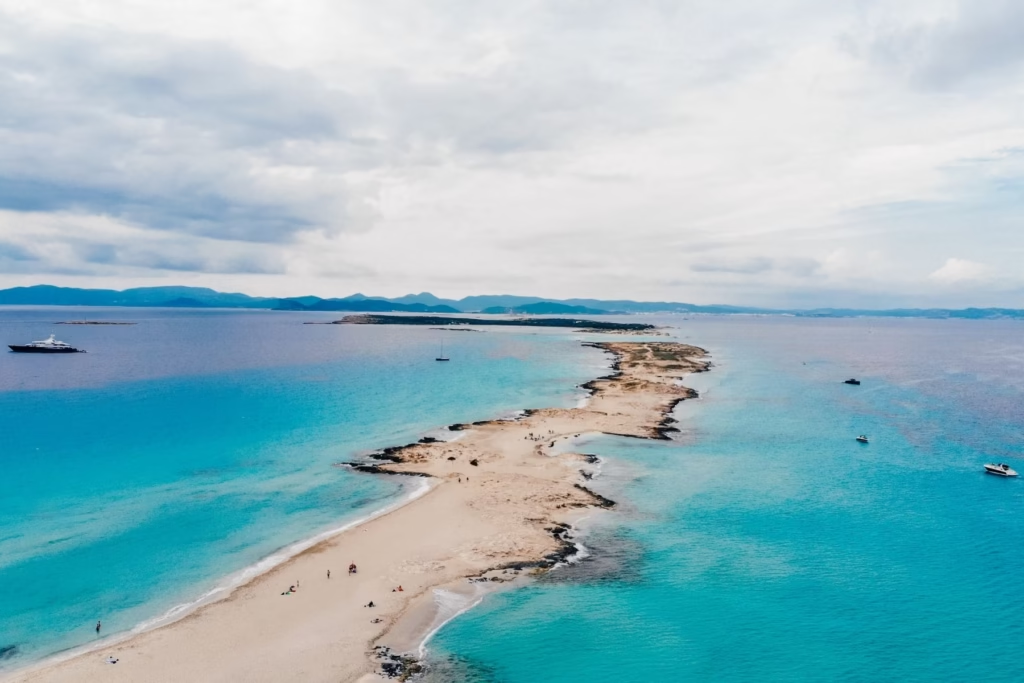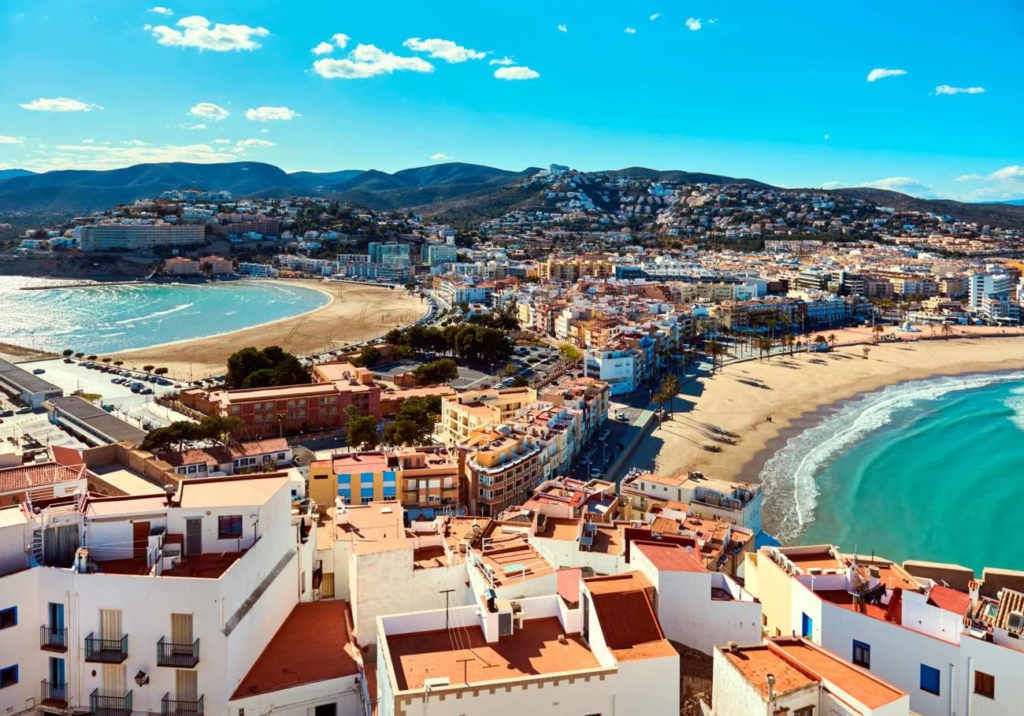Formentera is a serene paradise nestled in the Balearic Islands, just south of lively Ibiza. It is famous for its white sand beaches, crystal-clear waters, and vibrant marine life. If you crave a slower pace of life or long for natural beauty, this destination should be at the top of your travel list. In this comprehensive guide, you will learn everything you need to know about getting there, places to stay, must-see attractions, local cuisine, and the best tips for an eco-friendly visit.

Why Formentera Is the Perfect Mediterranean Escape
Formentera is the smallest inhabited island of the Balearic Islands. Its unspoiled landscape draws travelers from all over the world. Many come to relax on pristine beaches, but there are also countless activities to enjoy. You can explore hidden coves, cycle along coastal paths, and taste delicious local dishes in charming seaside towns.
Key Highlights:
Pristine Beaches: Formentera boasts endless stretches of sand with turquoise waters.
Eco Tourism: The island is committed to protecting its environment. You will see extensive efforts to preserve natural landscapes and marine life.
Relaxed Atmosphere: This is the place to escape high-rise hotels and urban chaos, in favor of a slower pace.
A Brief History and Cultural Insight
Despite its small size, Formentera has a rich history influenced by various civilizations. Phoenicians, Romans, and Byzantines once passed through these shores. Over time, the island built a culture that blends tradition and modern tourism. Local fiestas and festivals often celebrate these diverse roots.
Traditional meals still hold a special place in local culture. Fishermen have always played a major role here. Today, fishing remains an essential part of life, though tourism has grown rapidly. Despite that, Formentera maintains a tight-knit community. You can see it in the friendly greetings and local crafts on display in village markets.
How to Get to Formentera
Ferry Connections from Ibiza and Mainland Spain
Formentera does not have its own airport. Most visitors arrive via ferry connections from Ibiza, which takes around 30 minutes to an hour, depending on the service. There are also occasional direct ferries from mainland ports such as Denia, though Ibiza remains the main transit point. Boats generally dock at La Savina, a lively port with shops, restaurants, and car hire outlets.
Travel Tips:
Pre-Book Ferry Tickets: This ensures you get your preferred timetable.
Check Seasonal Timetables: Ferry frequency changes in low and high seasons.
Arrive Early: Lines can be long during peak summer months, so plan accordingly.
Getting Around the Island
Car Hire and Bike Hire
Once you arrive at La Savina, you can choose from several transport options. Car hire is popular for those who want full control of their itinerary. Renting a scooter or opting for bike hire is another common choice, especially for eco tourism enthusiasts who prefer a more sustainable form of travel.
Car Hire: Ideal if you plan to see the entire island, including remote spots like Cap de Barbaria.
Bike Hire: Perfect for shorter distances and scenic routes, especially around Es Pujols.
Scooter Rental: A great middle ground, giving speed and affordability on winding coastal roads.
Public Transport
There is also a bus service covering major points of interest. However, schedules may be less frequent during the off-season. This option is affordable and practical, but it might limit exploration of secluded coves or countryside trails.
Best Time to Visit Formentera
Peak season runs from June to early September. You can expect warm weather and bustling beaches. If you prefer a quieter escape, consider coming in May or late September. Temperatures remain comfortable, and the sea is still warm enough for swimming. You will also find fewer crowds, especially in early October, when local life regains its leisurely pace.
Weather Overview by Season:
Spring (April–May): Mild temperatures, blossoming flora, and fewer tourists.
Summer (June–August): Hot, sunny days and a lively nightlife in Es Pujols.
Autumn (September–October): Still warm, fewer visitors, and great for exploring Cap de Barbaria’s sunsets.
Winter (November–March): Cooler and quiet, suitable for those seeking complete solitude.
Where to Stay in Formentera
Luxury Resorts and Boutique Hotels
Though Formentera is more rustic compared to its larger Balearic neighbors, you can still find luxurious stays. Some boutique hotels offer sea views, private terraces, and upscale amenities. Many are located near Es Pujols, which has the highest concentration of accommodations.
Recommended Areas for Luxury:
Es Pujols: Lively area with high-end hotels and vibrant nightlife.
La Savina: Close to the port, convenient for day trips and ferry connections.
Budget-Friendly Accommodation
If you seek budget options, consider guesthouses or hostels in Sant Ferran or Es Caló. These villages provide a more authentic, laid-back vibe. You can still reach popular beaches like Ses Illetes in under 20 minutes by car, scooter, or bike.
Top Beaches and Scenic Spots
Ses Illetes
Ses Illetes is often ranked among Europe’s most beautiful beaches. Its soft white sand and crystal-clear waters create a Caribbean feel in the Mediterranean. You can enjoy water sports in Formentera here, from snorkeling to stand-up paddleboarding.
Highlights of Ses Illetes:
Clear Shallow Waters: Ideal for families and beginner swimmers.
Scenic Views of Ibiza: Clear days allow glimpses of Ibiza’s coastline.
Nearby Restaurants: Beach bars offer fresh seafood and refreshing cocktails.
Caló des Mort
Caló des Mort is a picturesque cove located in the southeast. It is surrounded by rocky cliffs and shimmering turquoise waters. Due to its smaller size, it can get crowded in high season, so arrive early to secure a spot.
Migjorn Beach (Platja de Migjorn)
Migjorn Beach, also referred to as Es Migjorn, stretches along the southern coast. Its length guarantees various access points, each with its own charm. Small beach bars called “chiringuitos” serve chilled drinks. You can also find perfect snorkeling conditions close to the rocky sections.
Must-See Attractions
Cap de Barbaria Lighthouse
The Cap de Barbaria Lighthouse is perched on steep cliffs offering panoramic views and stunning sunsets. This iconic location is a favorite for photographers, so bring your camera. Many travelers come here around sunset for a tranquil end to the day. There is a short hike from the car park to the cliff’s edge, giving you time to soak up the scenery.
Sant Francesc Xavier
Sant Francesc Xavier, often called Sant Francesc, is the island’s capital. It features a central church dating back to the 18th century. Boutique shops and local bars line the main square. It is a top spot to experience authentic Formentera life, especially on market days when you can buy crafts and local produce.
Es Pujols
Es Pujols is a bustling resort town known for beachside bars and restaurants. It is the island’s primary nightlife center, though still tame compared to Ibiza. Stroll along its boardwalk, or grab a seat at a terrace to watch the world go by.
Outdoor Activities and Watersports in Formentera
Snorkeling and Scuba Diving Formentera
Formentera’s crystal-clear waters create perfect conditions for snorkeling and scuba diving. You can join a guided tour or rent gear from local shops. Marine reserves around the island teem with fish, sea turtles, and vibrant corals.
Key Locations for Diving:
La Plataforma: An underwater platform with a variety of marine life.
Punta Prima: Offers rocky landscapes beneath the surface, home to octopuses and groupers.
Boat Tours and Sunset Cruises
A sunset tour off the coast reveals mesmerizing views of the horizon and the island’s rugged shoreline. Some boat tours make stops at secluded coves, allowing you to swim and snorkel. You may also visit the small islet of S’Espalmador, famous for its natural mud baths and turquoise waters.
Cycling and Hiking
Explore coastal paths that wind through forests of pine and juniper trees. Cycling tours are a popular way to discover hidden corners. Trails to watch out for include the route from La Savina to Sant Francesc, passing salt flats and scenic lookout points.
Savoring Local Cuisine
Formentera’s gastronomy is an extension of its maritime roots. Freshly caught fish features prominently on local menus. You might come across “peix sec,” a unique specialty made from dried and salted fish. Many restaurants also serve farm-to-table dishes, showcasing garden-fresh vegetables and island herbs.
Must-Try Dishes:
Bullit de Peix: A seafood stew accompanied by rice cooked in the broth.
Figs and Local Cheese: Often used in tapas or desserts.
Orelletes: A sweet treat flavored with anise, popular during festive periods.
Sustainable and Eco Tourism on Formentera
Formentera takes sustainability seriously, as seen in its efforts to protect marine ecosystems and control visitor numbers. During peak season, cars are limited in some areas to reduce pollution. Many businesses also emphasize using local produce and renewable energy. If you want to support eco tourism, choose accommodations certified with green practices or plan your trip in off-peak months.
Frequently Asked Questions (FAQs)
1. Do I need a visa to visit Formentera?
Formentera is part of Spain, so EU/EEA citizens do not need a visa. Travelers from other regions should check the latest Schengen Area regulations before booking flights.
2. Is there an airport on Formentera?
No, there is no airport. The only way to reach Formentera is by ferry, mainly from Ibiza or sometimes from mainland Spain.
3. What is the best time to visit?
The best months are May, June, September, and early October. The weather is warm, and beaches are less crowded. July and August are peak months with bigger crowds and higher prices.
4. Is Formentera expensive?
Costs can be high during peak season, especially for accommodation. Traveling off-peak, booking in advance, and choosing local guesthouses helps reduce expenses.
5. Can I visit Formentera on a day trip from Ibiza?
Yes, many travelers choose a day excursion. However, staying longer allows you to discover hidden coves, try local cuisine, and explore at a relaxed pace.
6. What are must-try local dishes?
Fresh seafood is a highlight. Try “peix sec,” “bullit de peix,” and “orelletes” for a sweet finish.
Final Tips and Conclusion
Formentera offers a combination of natural beauty, cultural traditions, and peaceful relaxation. From stunning Ses Illetes to the cliffs of Cap de Barbaria, the island’s treasures are unforgettable. Travel here to escape the bustle of city life and immerse yourself in Mediterranean charm. Whether you choose car hire, bike hire, or scooter rental, you will find easy ways to navigate and explore hidden corners. Linger in fishing villages to dine on local seafood or sip a cocktail on a terrace as the sun sets.
Planning ahead will help you enjoy Formentera’s laid-back vibe. Book ferry tickets in advance, avoid peak hours at popular beaches, and remember to practice responsible tourism. By respecting the island’s delicate ecosystem, you help ensure that future generations can also experience its splendor.
Make Formentera your next destination. Marvel at its pristine shores, indulge in local cuisine, and embrace the island’s relaxed rhythm. You will leave with memories of turquoise waters, warm hospitality, and a deeper appreciation for this Balearic gem.

